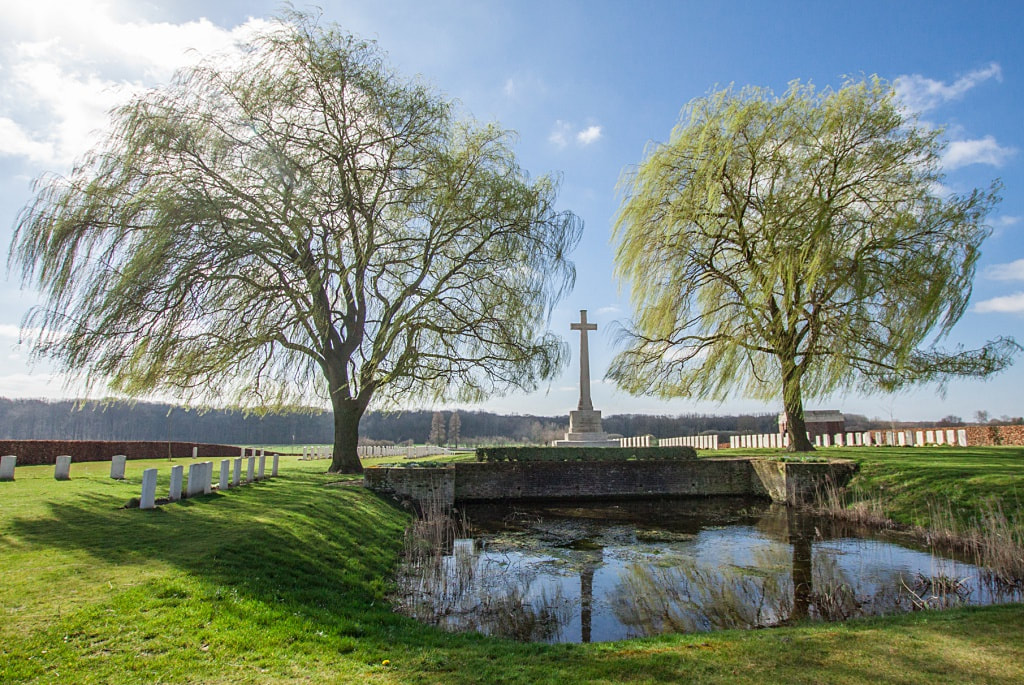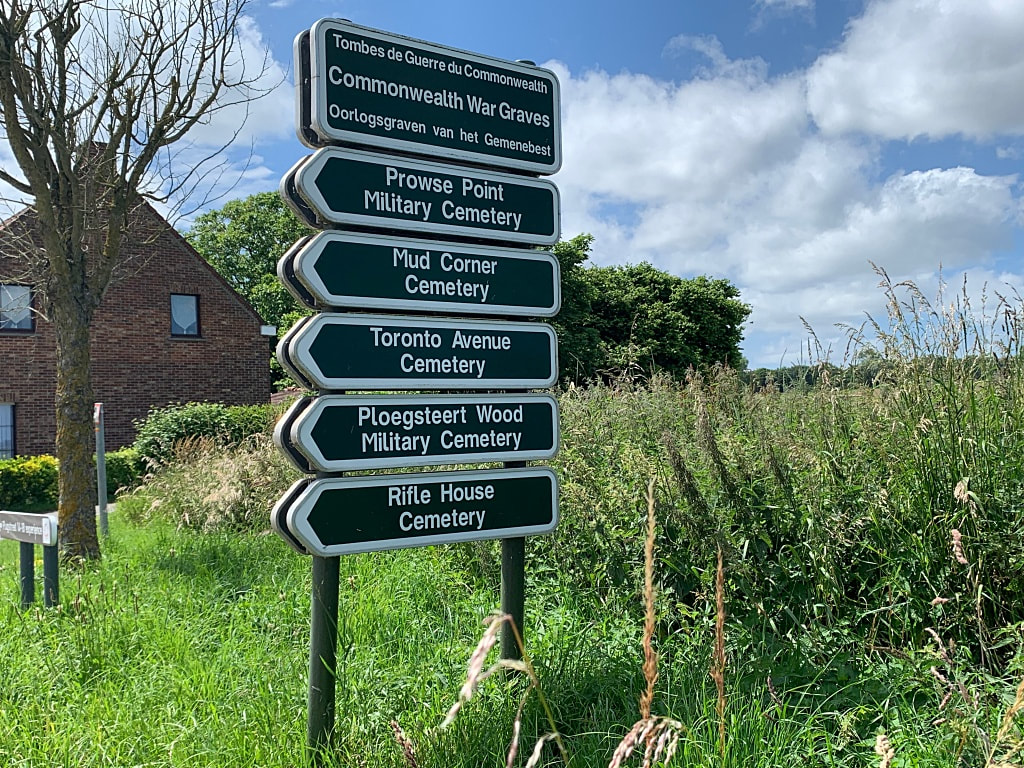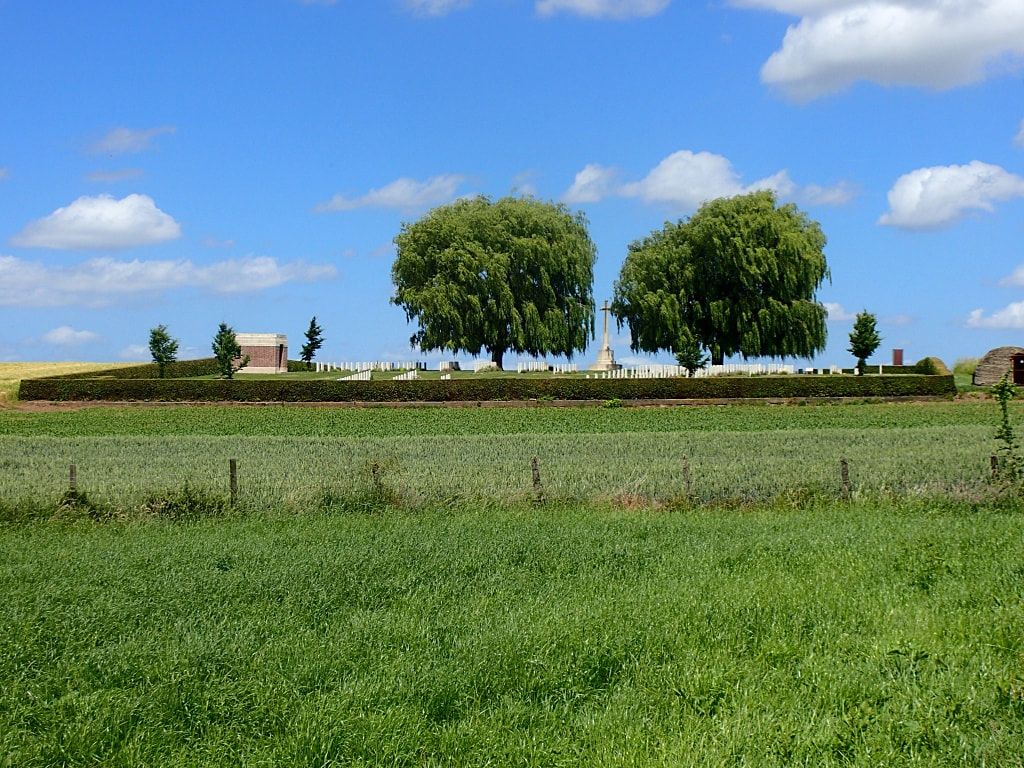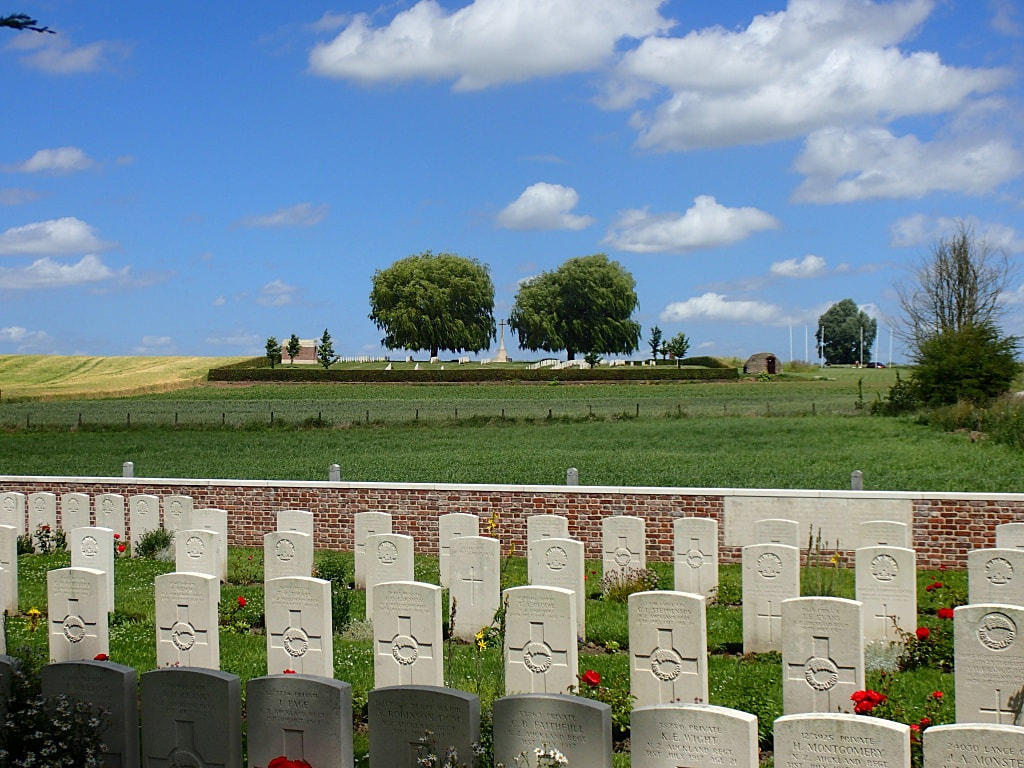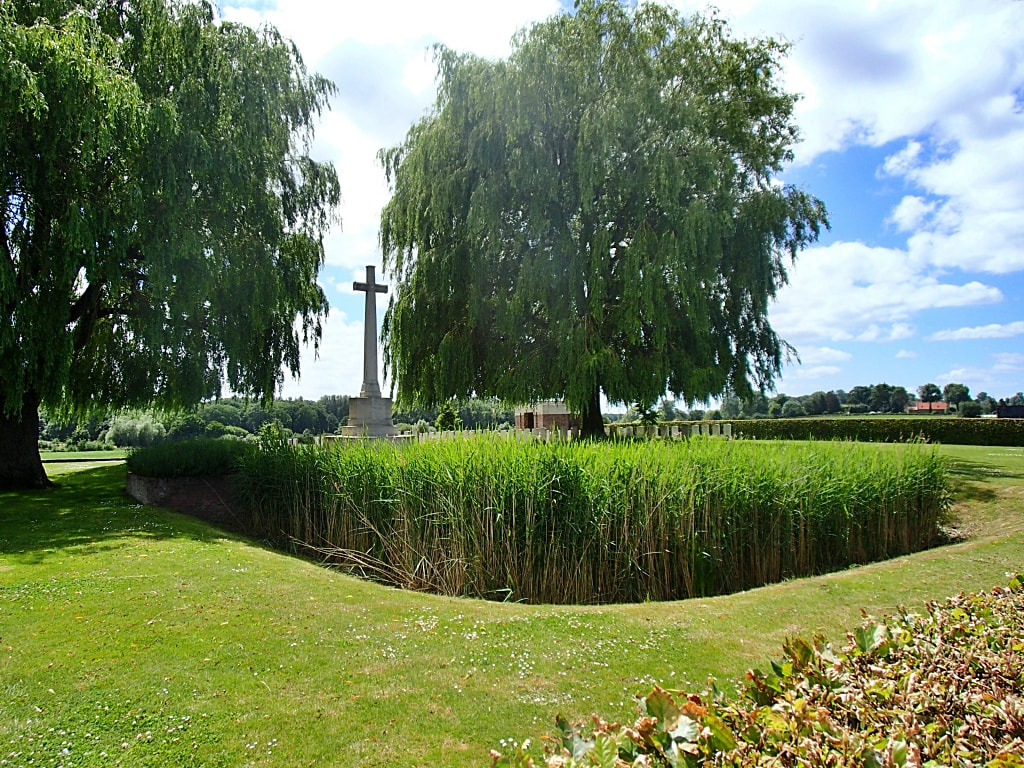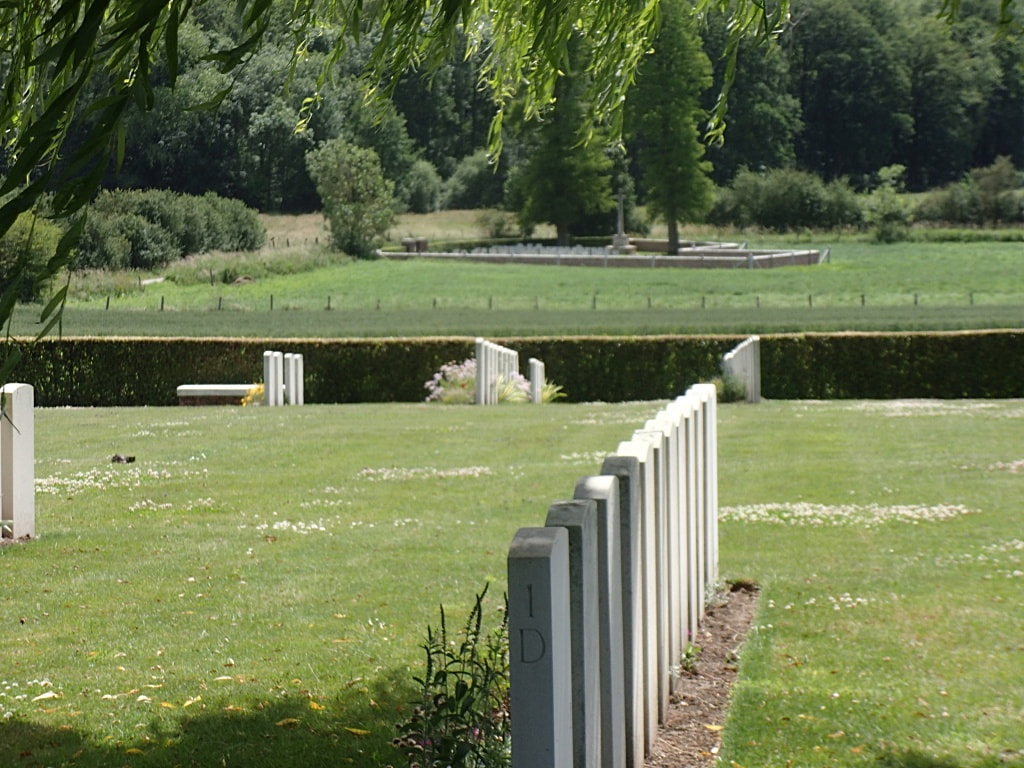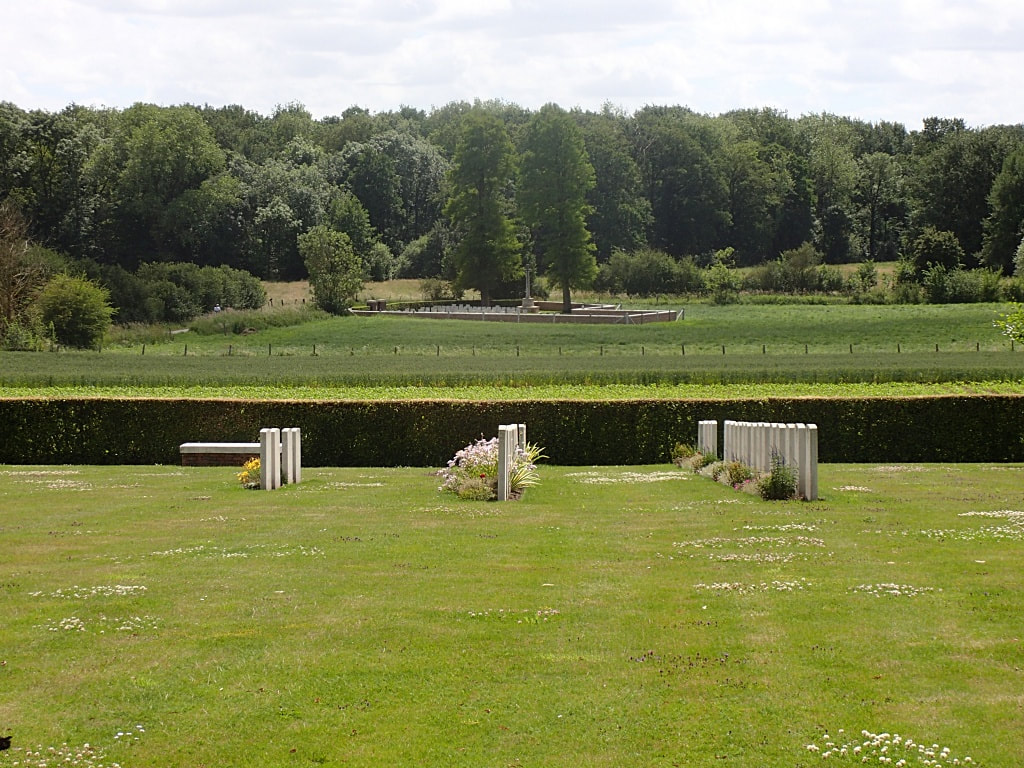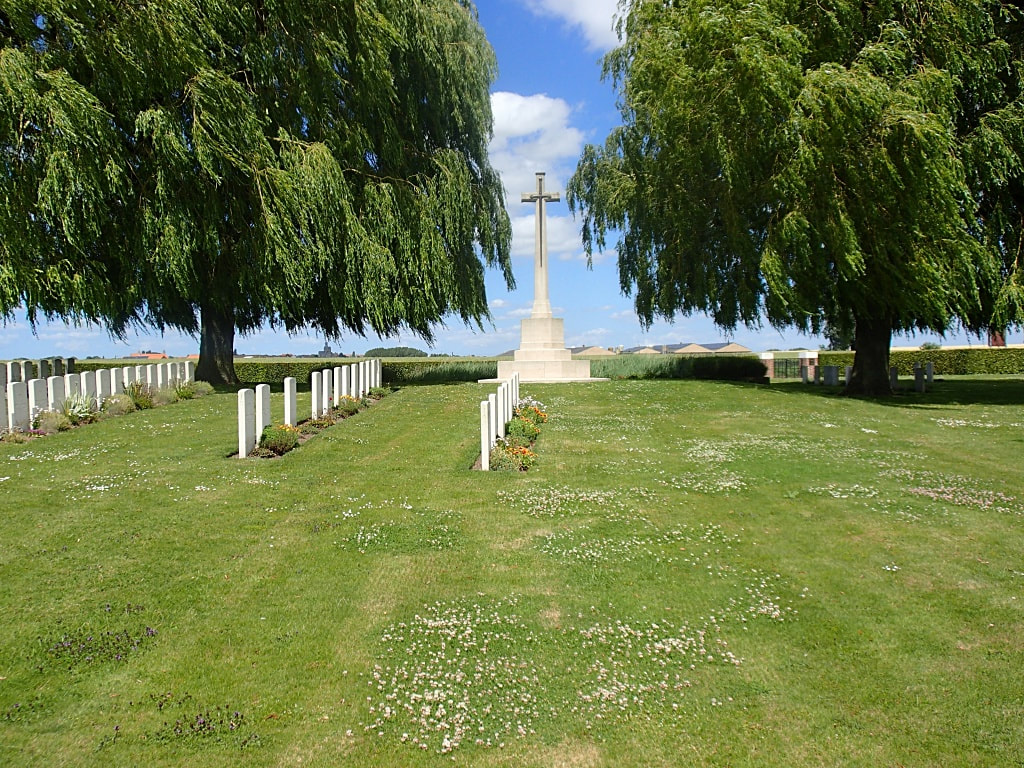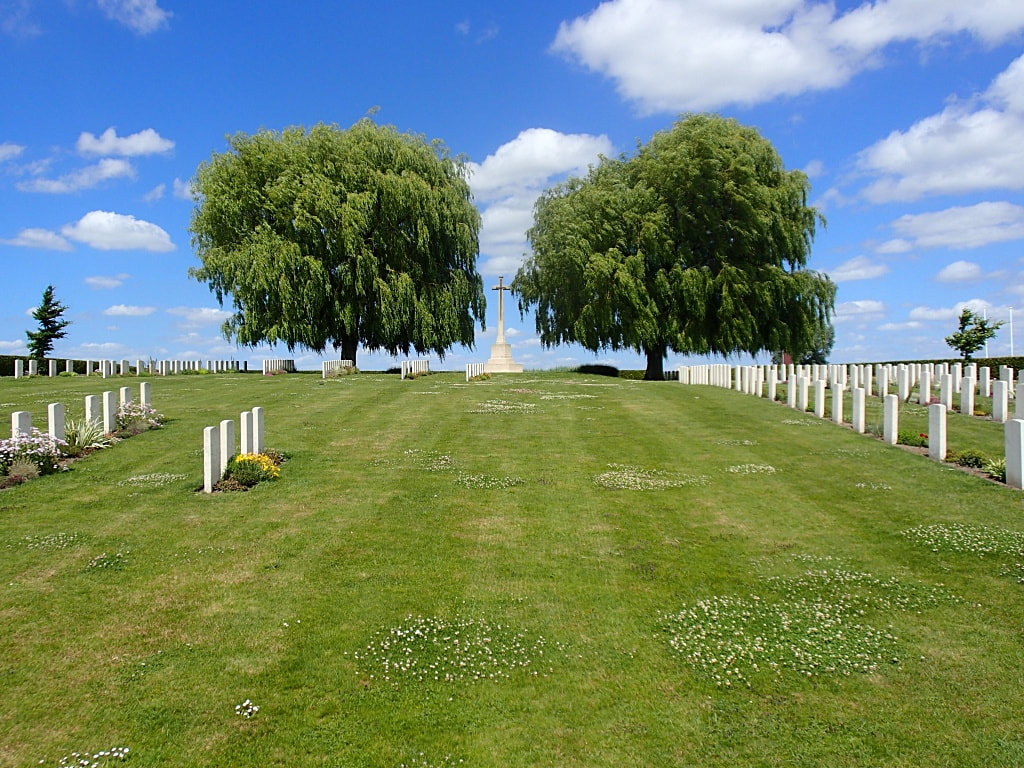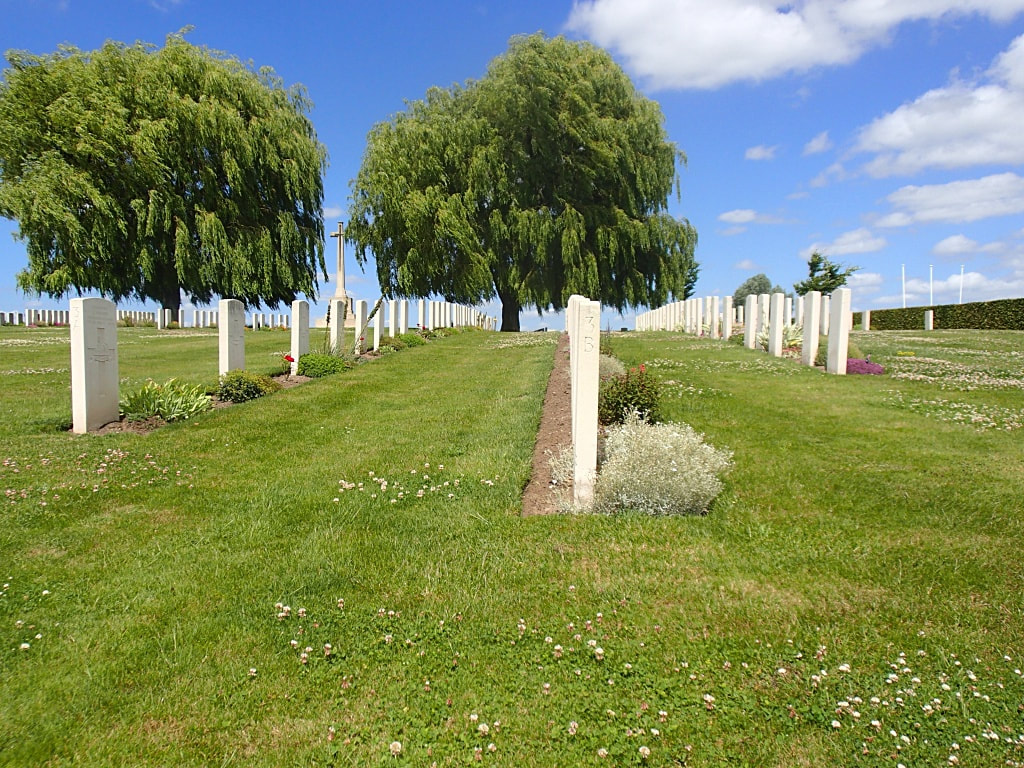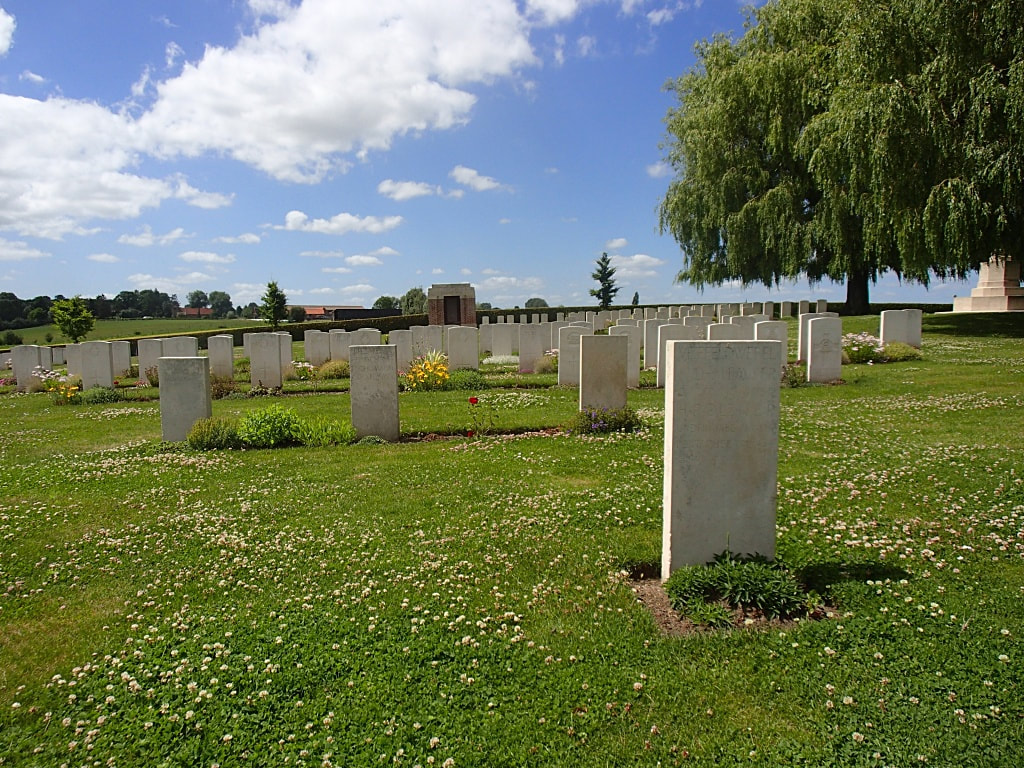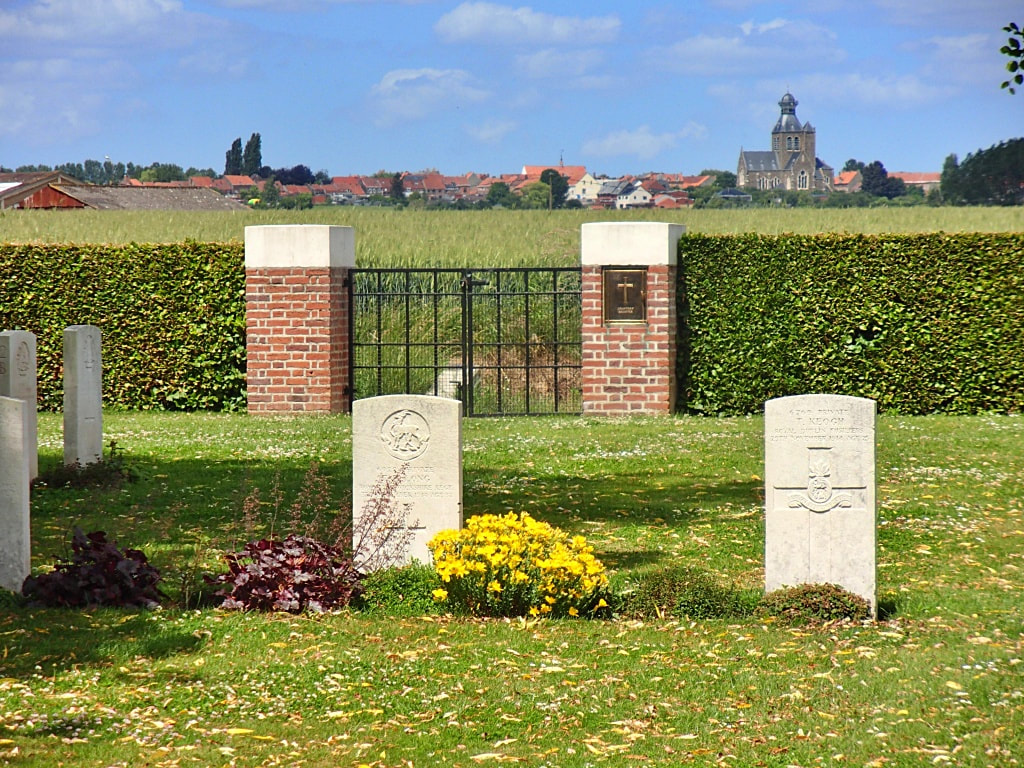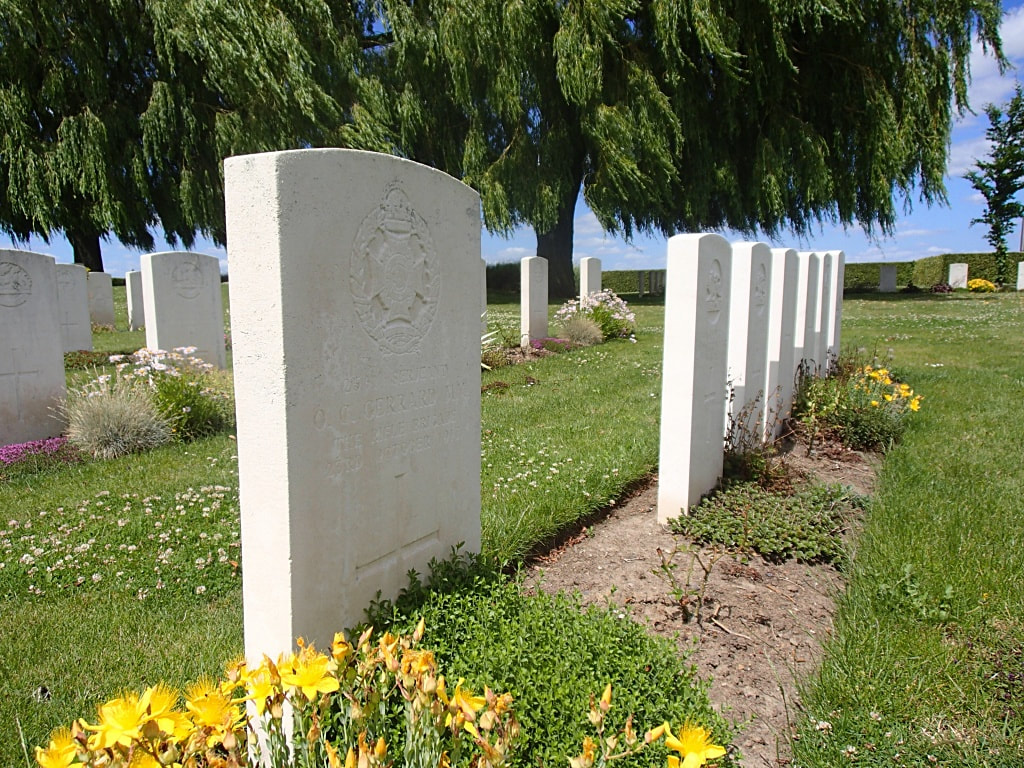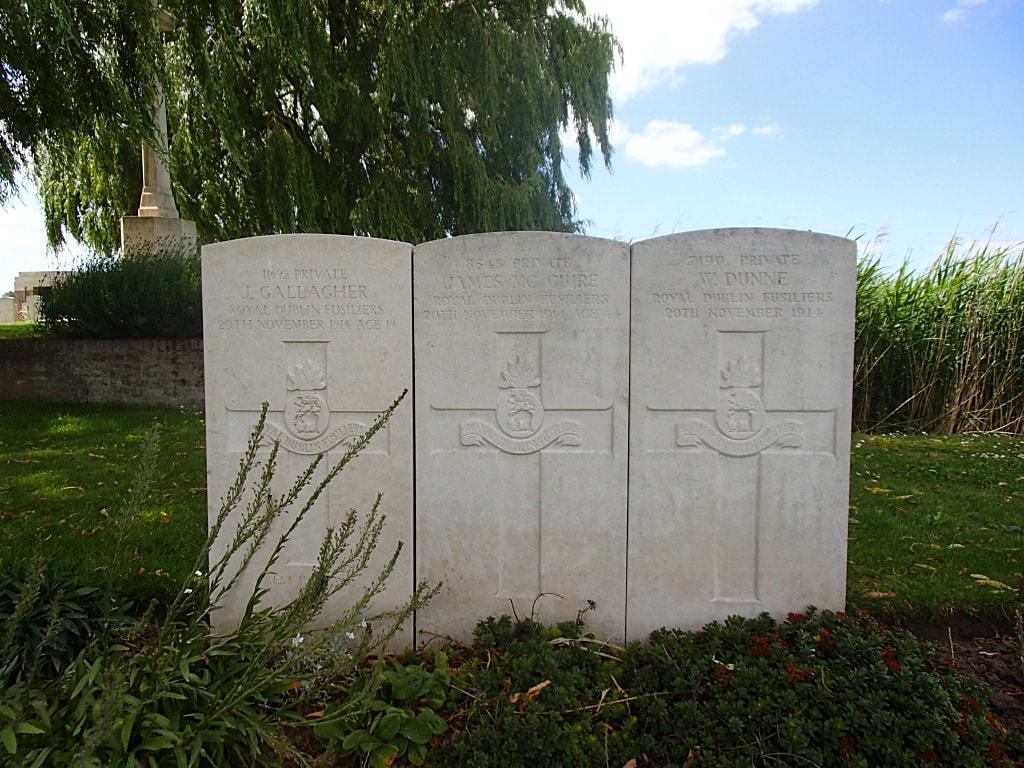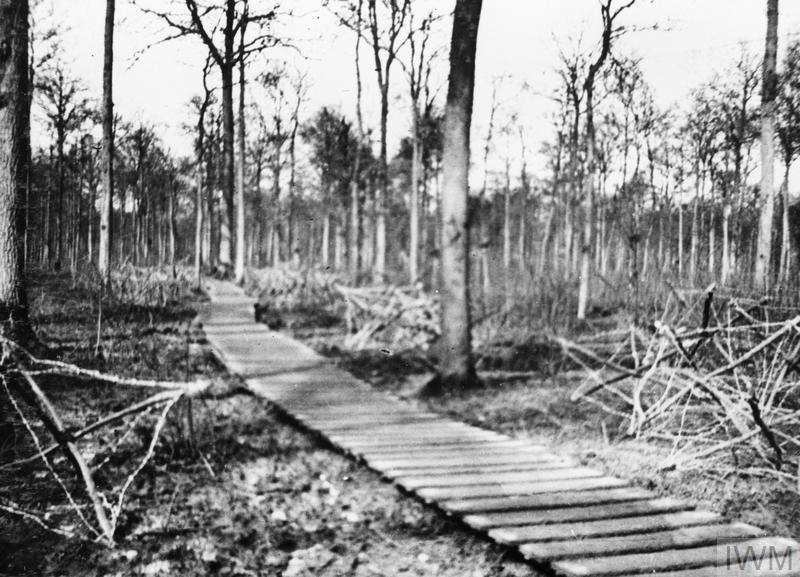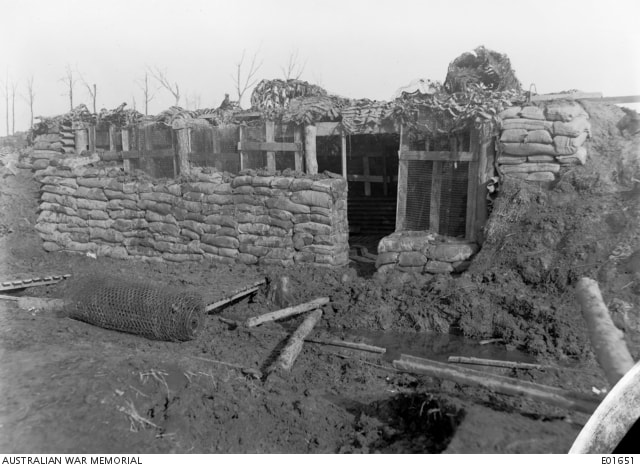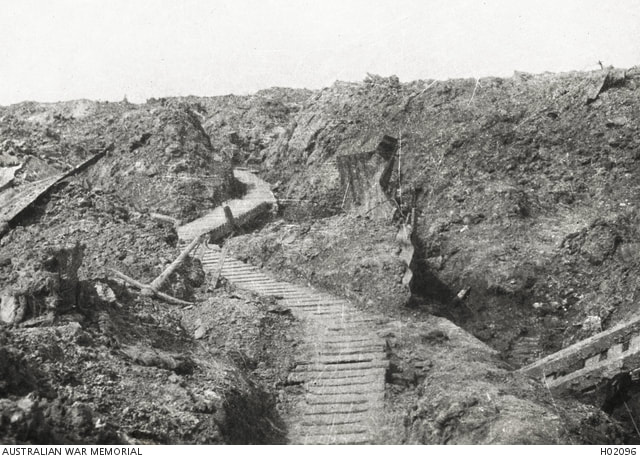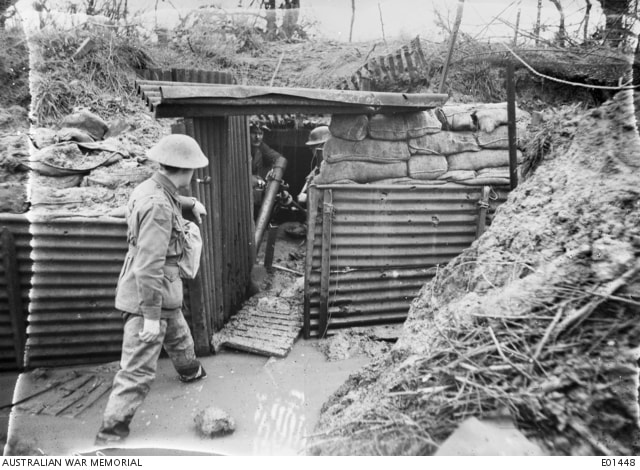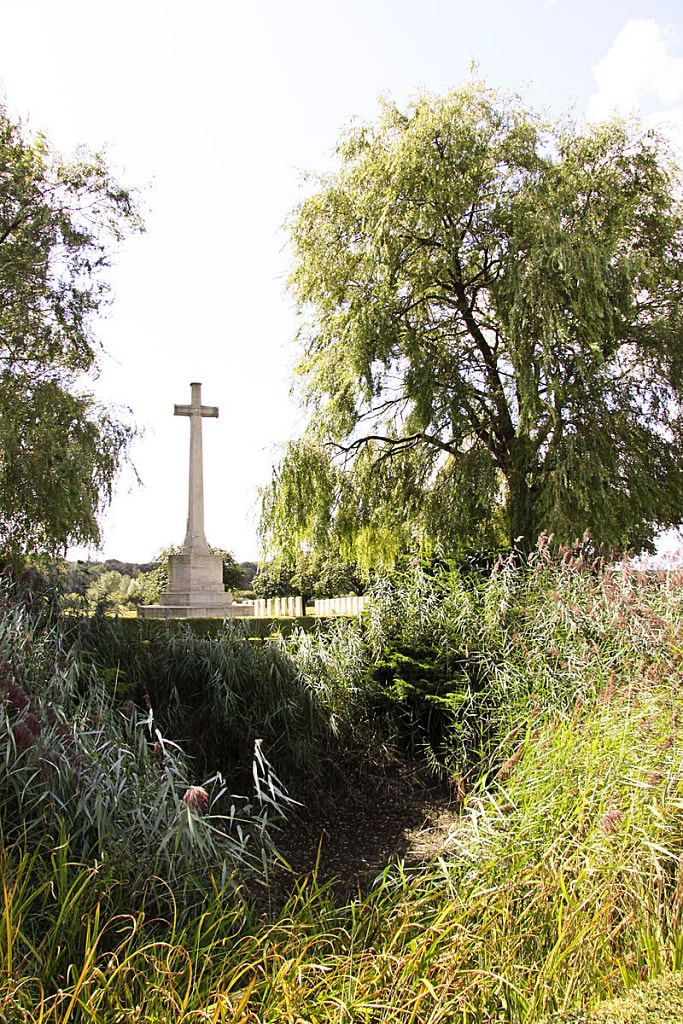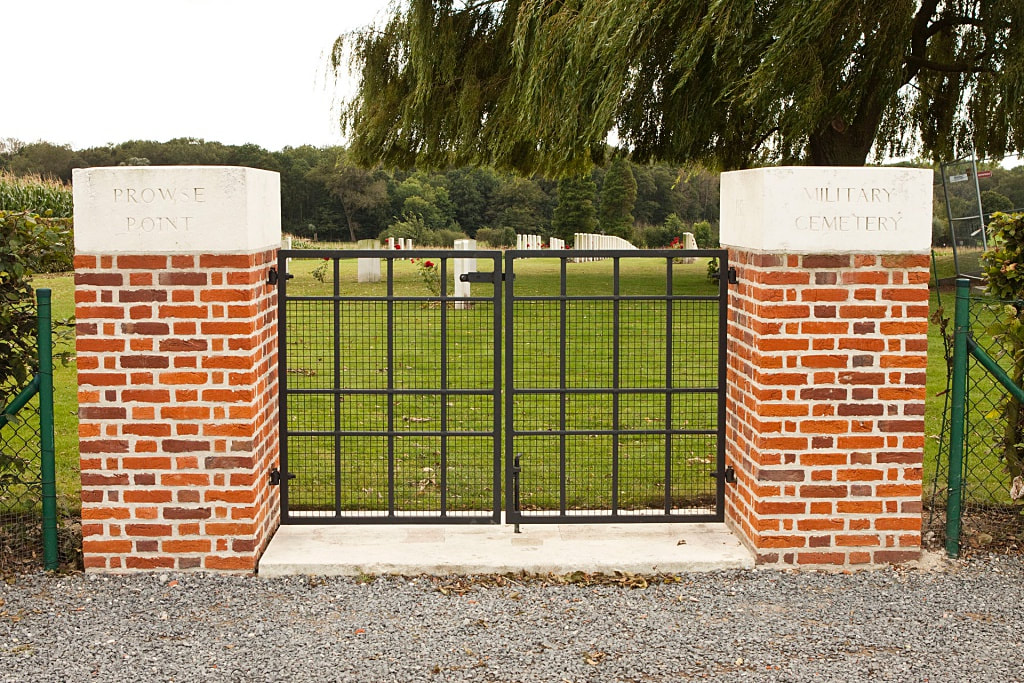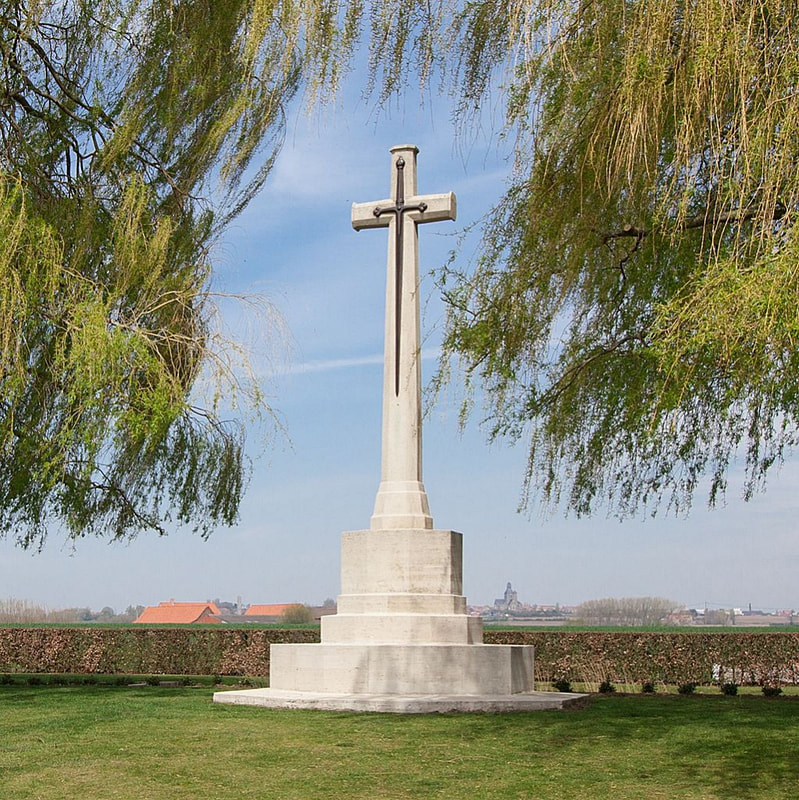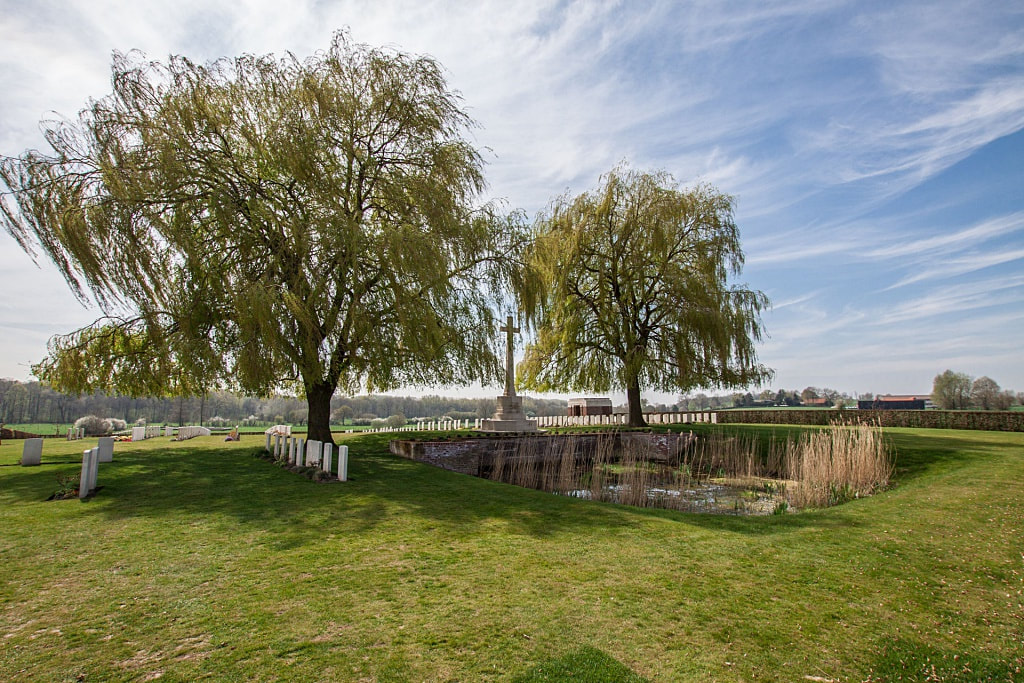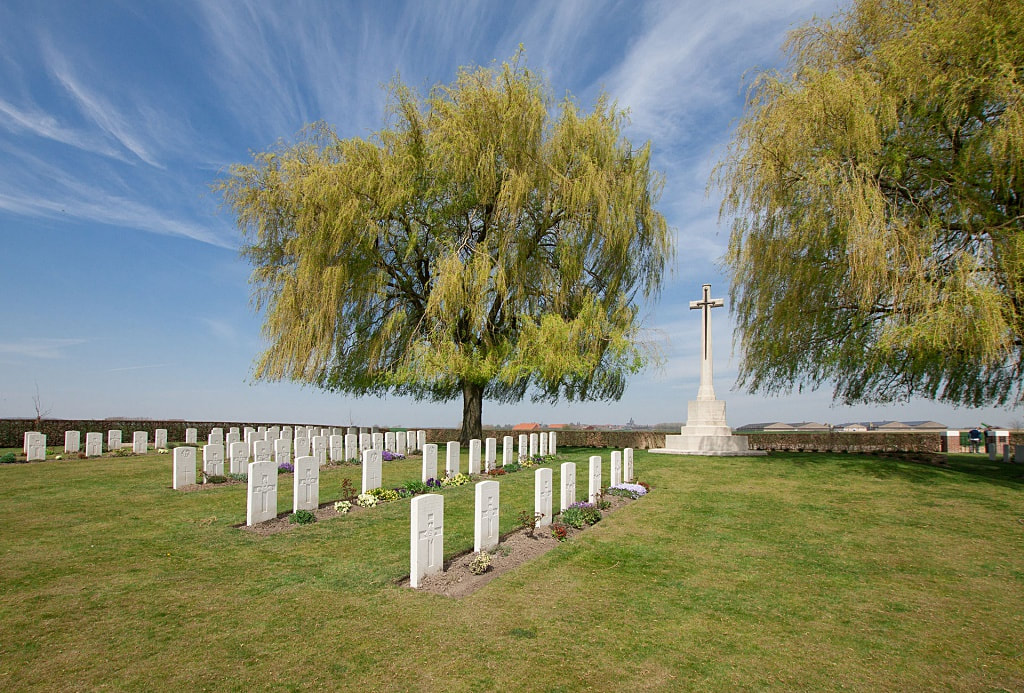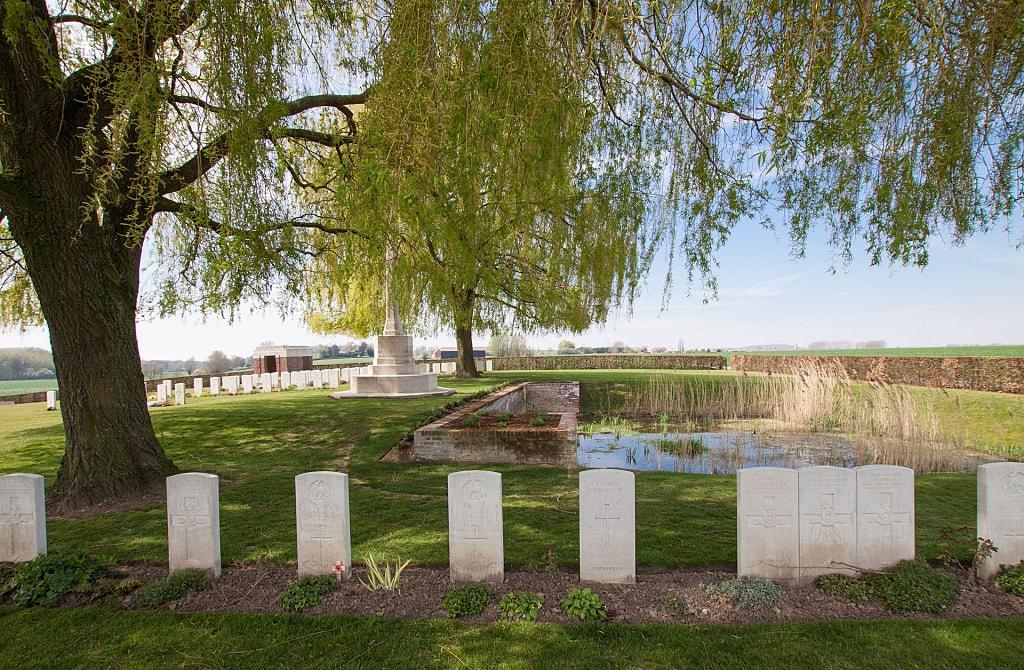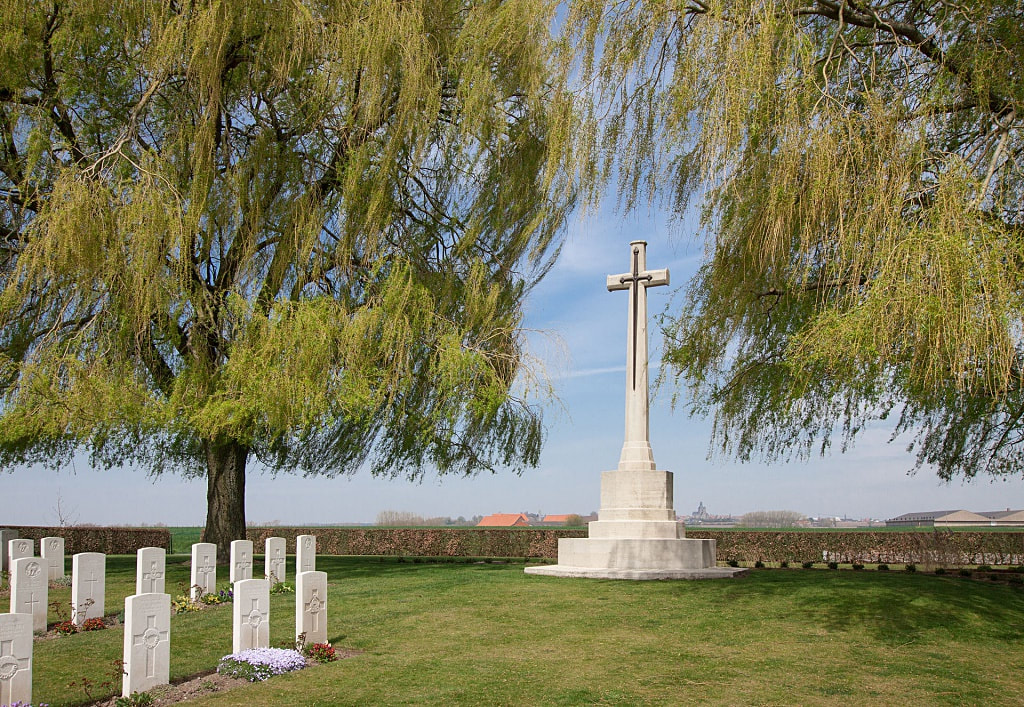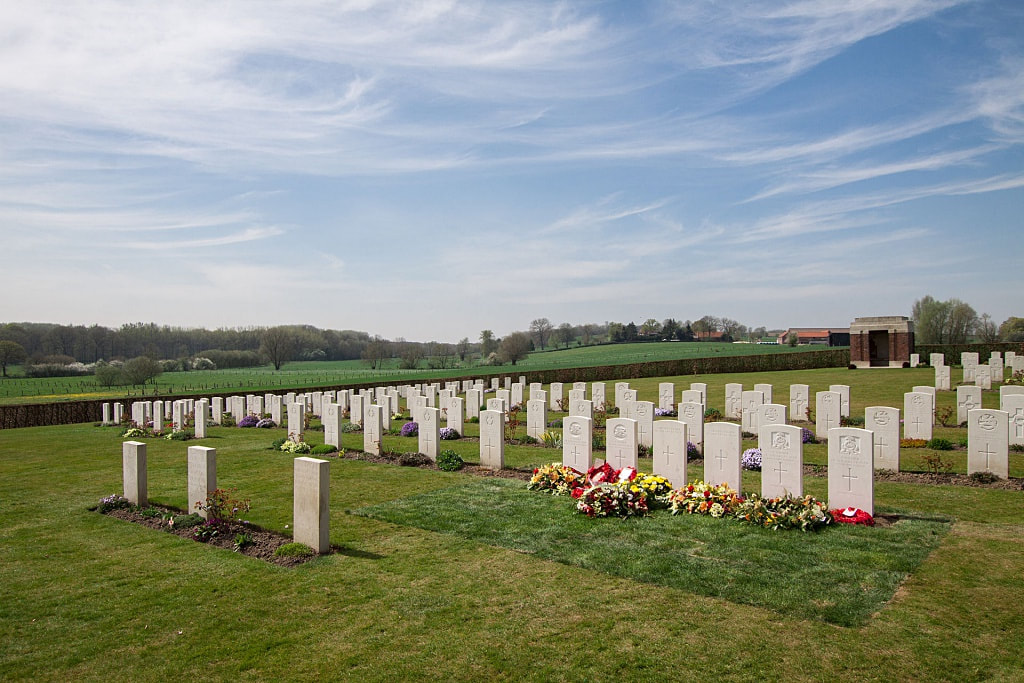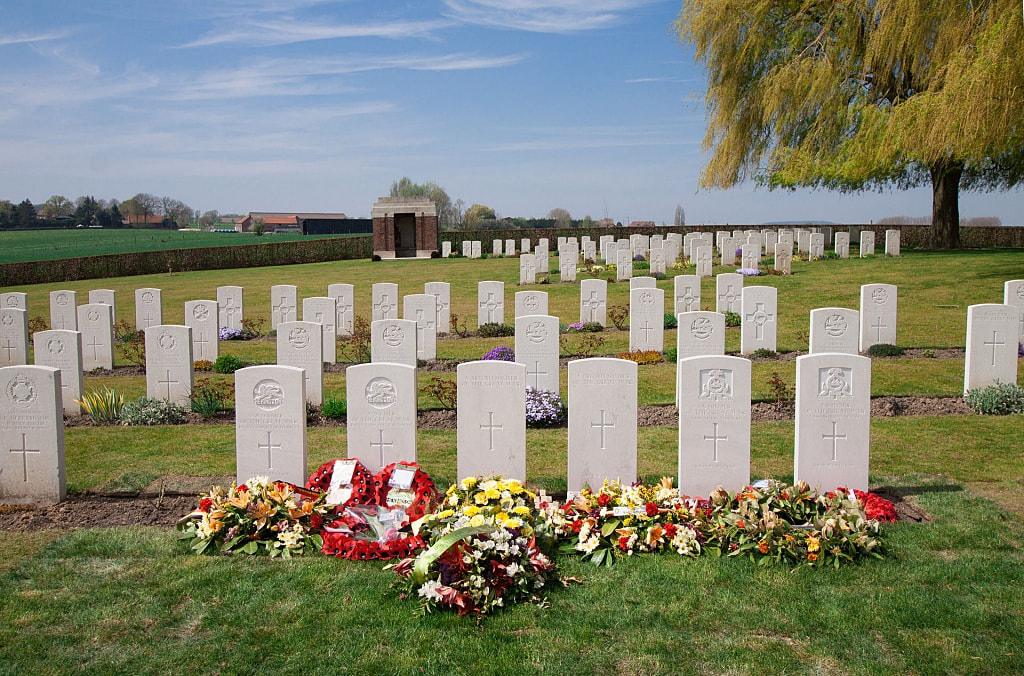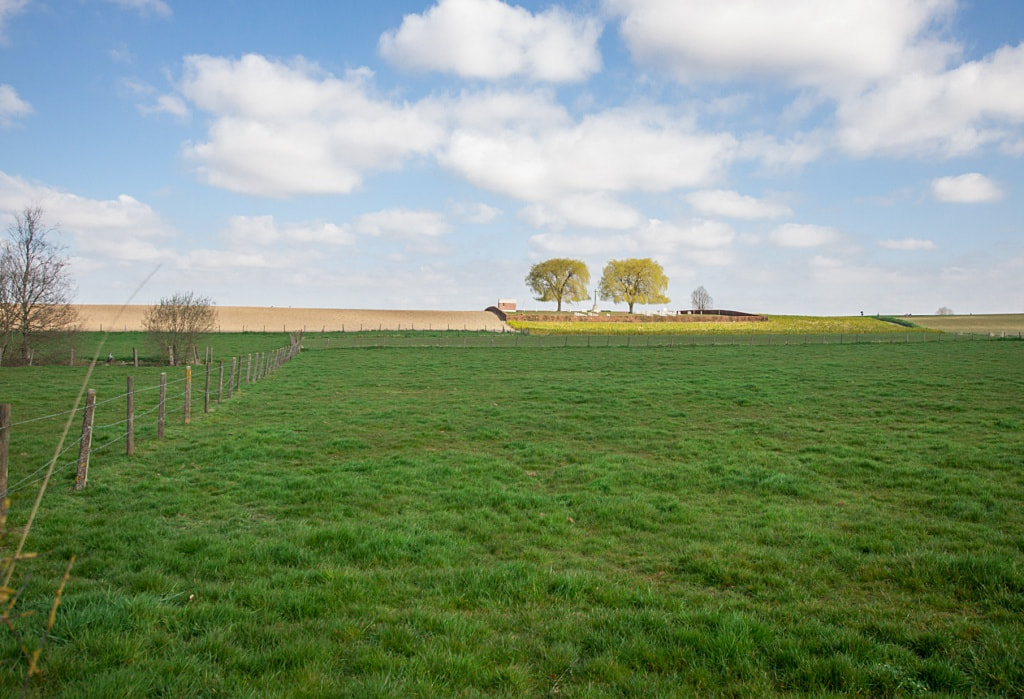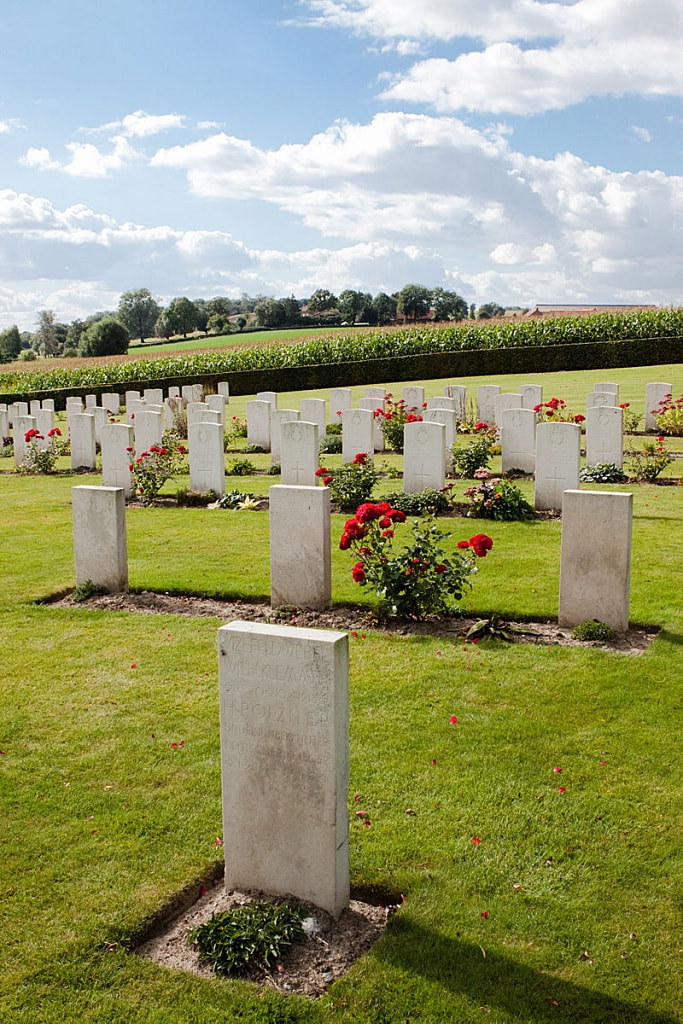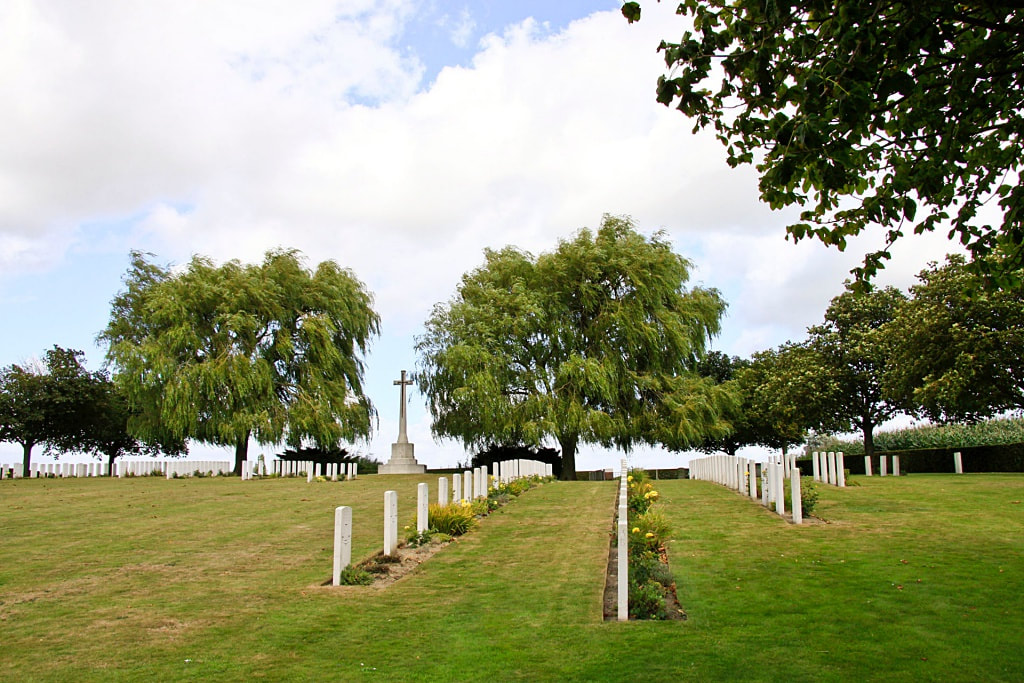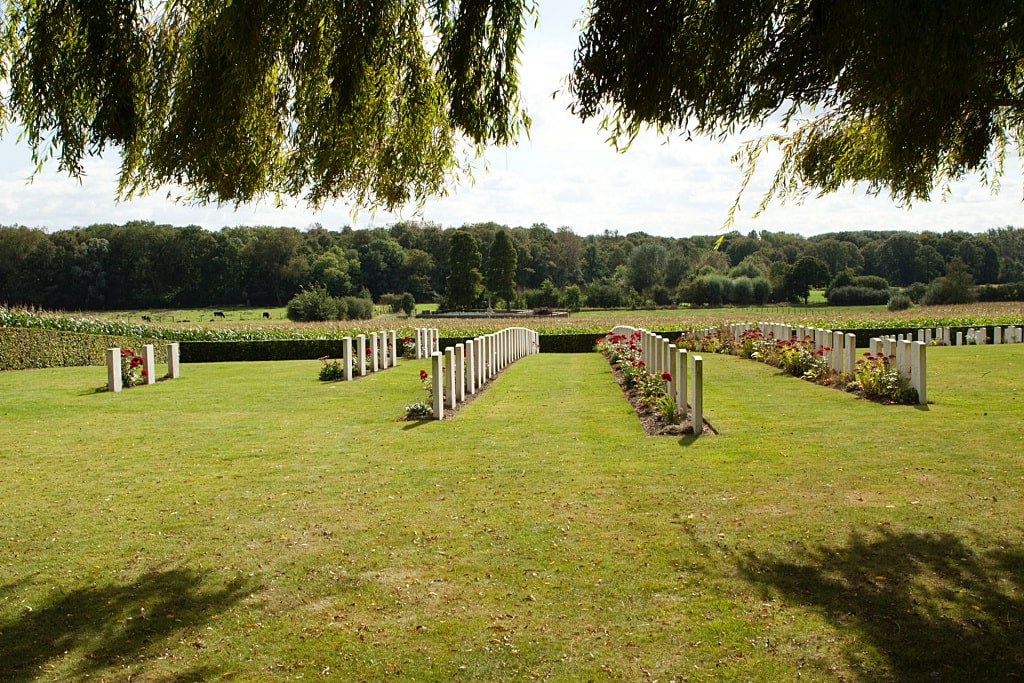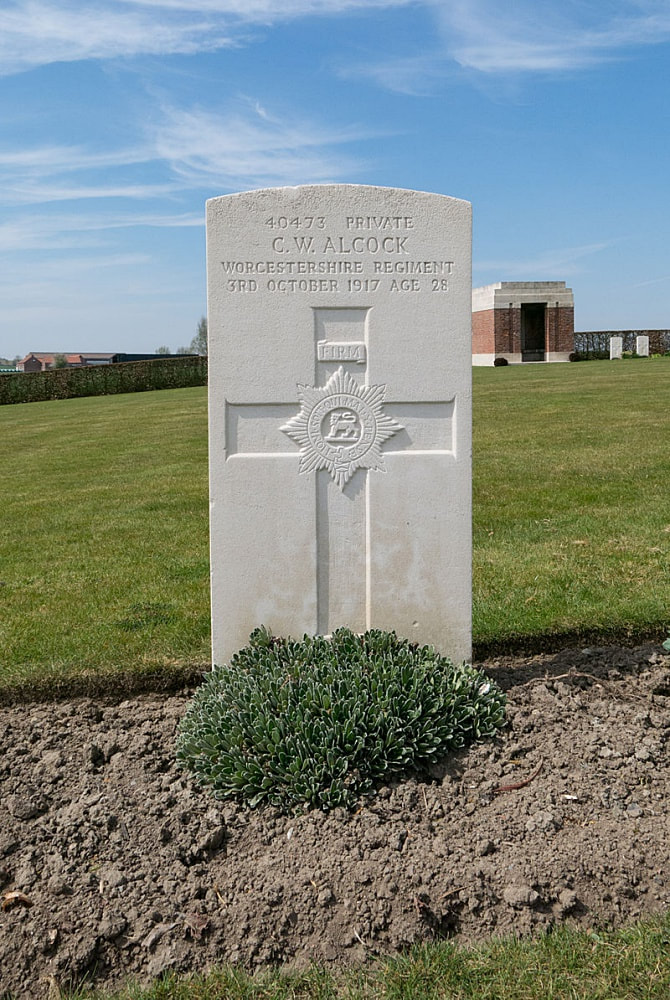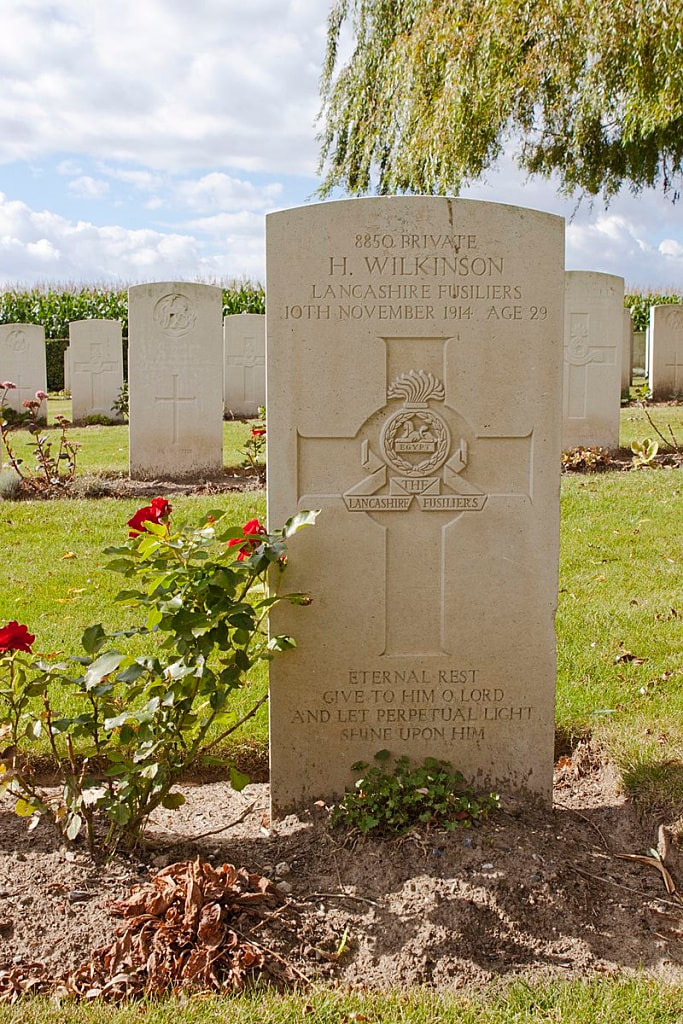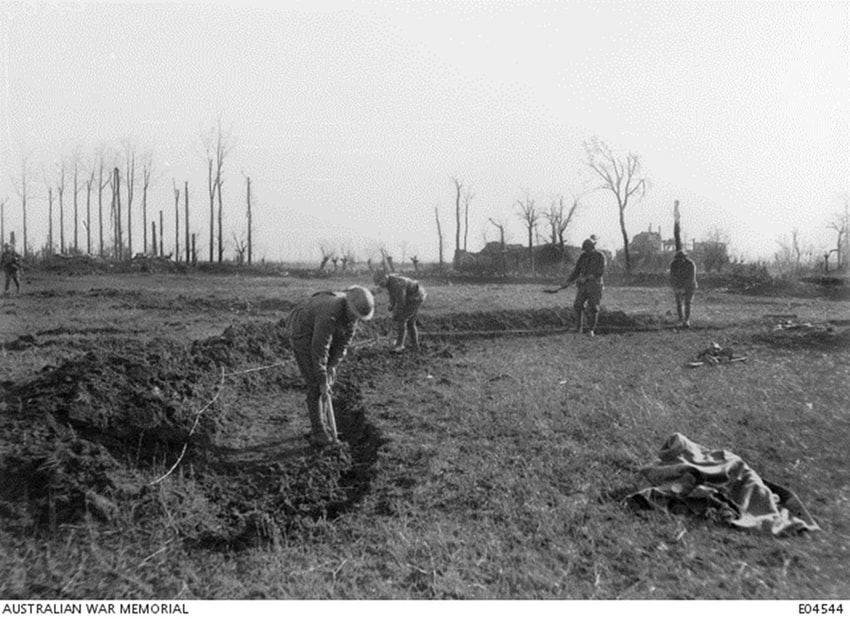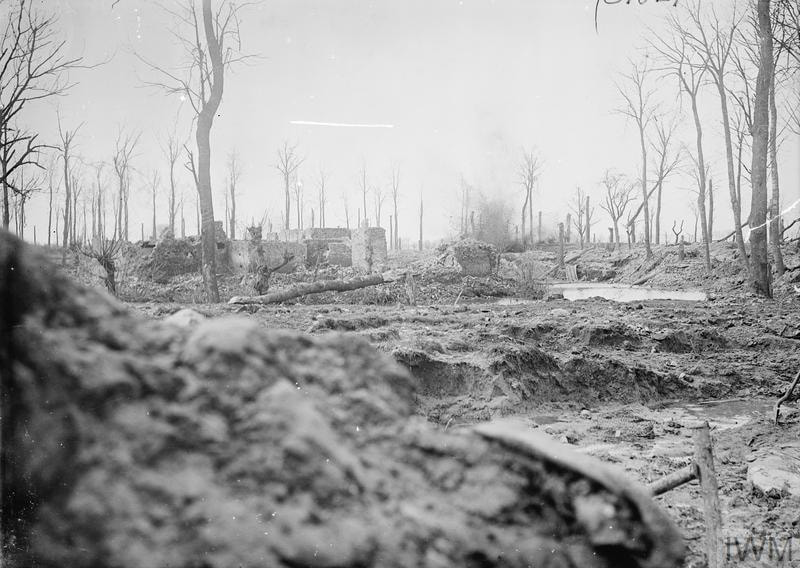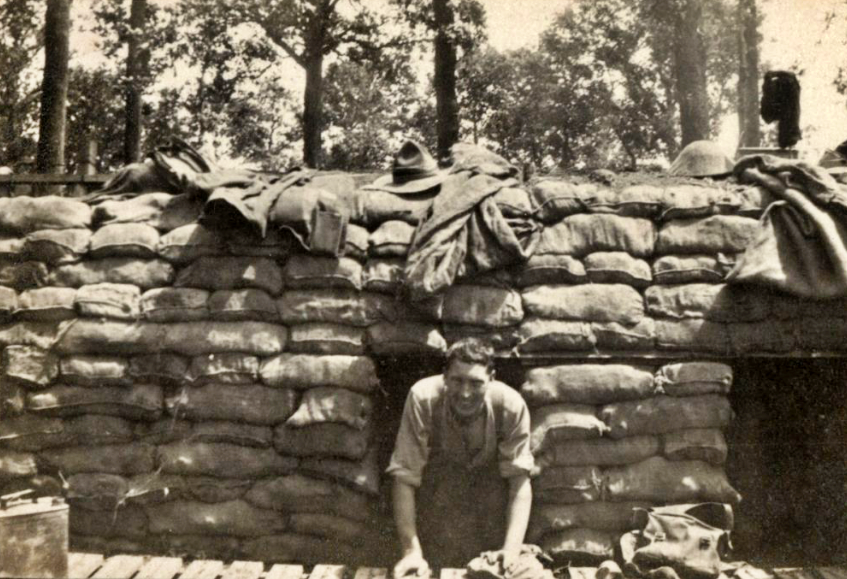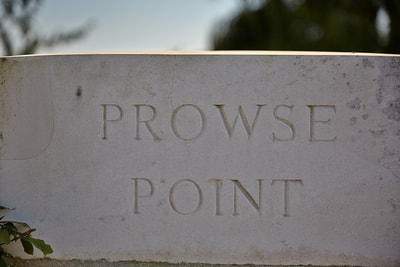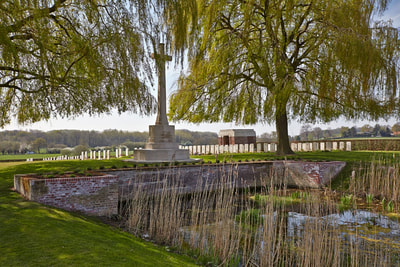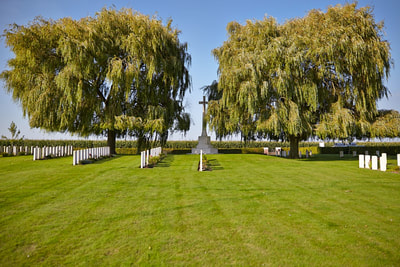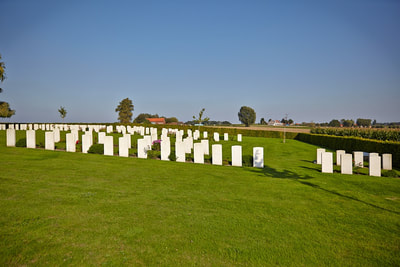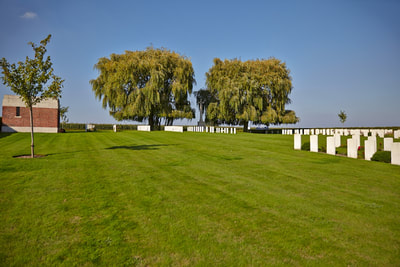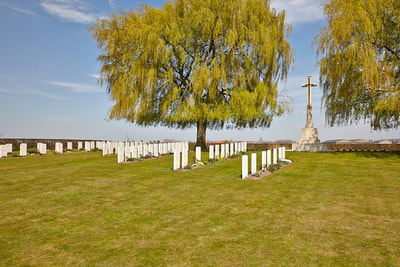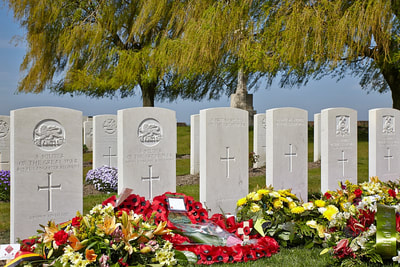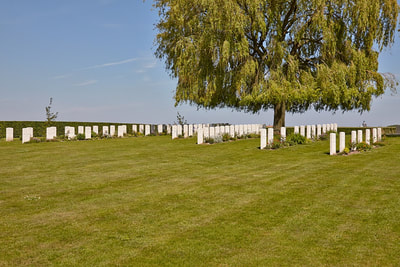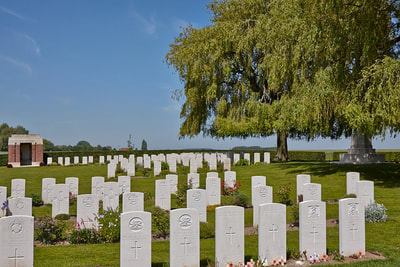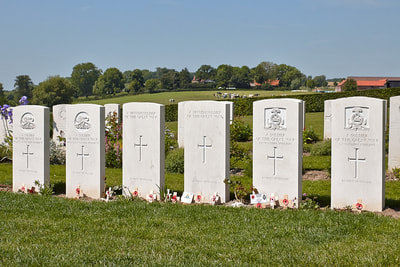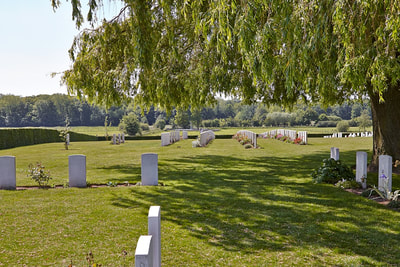PROWSE POINT MILITARY CEMETERY
Hainaut
Belgium
GPS Coordinates - Latitude: 50.74426, Longitude: 2.899
Location Information
Prowse Point Military Cemetery is located 11.5 Kms south of Ieper town centre, on a road leading from the Rijselseweg N365, which connects Ieper to Wijtschate, Mesen, Ploegsteert and on to Armentieres. From Ieper town centre the Rijselsestraat runs from the market square, through the Lille Gate (Rijselpoort) and directly over the crossroads with the Ieper ring road. The road name then changes to the Rijselseweg. 2 Kms after Mesen lies the left hand turning onto Rue St.Yvon. The cemetery is located 600 metres along this road on the right hand side.
Visiting Information
Wheelchair access to this site is possible, but maybe by an alternative entrance.
Historical Information
This cemetery is unique on the Salient for being named after an individual. It is the site of the stand by the 1st Bn. Hampshire Regiment and the 1st Bn. Somerset Light Infantry in October 1914, which featured the heroism of a Major Charles Prowse - later as Brigadier-General C.B. Prowse, DSO (Somerset Light Infantry), he would be killed on the first day of the Battle of the Somme, whilst commanding the 11th Infantry Brigade (he is buried in Louvencourt Military Cemetery).
The cemetery was begun by the 2nd Royal Dublin Fusiliers and the 1st Royal Warwicks, and was used from November 1914 to April 1918.
It contains 243 Commonwealth burials of the First World War.
The cemetery was designed by W H Cowlishaw.
Total Burials: 243.
Identified Casualties: United Kingdom 161, New Zealand 42, Australia 14, Germany 9, Canada 1. Total 227.
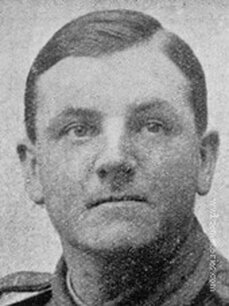
120 Corporal
Edward William Creighton
50th Bn. Australian Infantry, A. I. F.
22nd August 1917, aged 23.
Plot III. A. 19.
Son of Albert Joseph and Elizabeth Creighton, of 42, Tynte St., Adelaide, South Australia.
A 20 year old butcher prior to enlisting on 19 August 1914, he embarked for overseas with G Company of the 10th Battalion from Adelaide on 20 October 1914 aboard HMAT Ascanius. After going ashore at Gallipoli with the 10th Battalion on 25 April 1915, he was later taken ill and on 13 May 1915 was evacuated for medical treatment and hospitalised in Egypt. Following his transfer to the 50th Battalion, he was promoted to Lance Corporal in May 1916 before going on to France in June 1916. He was promoted to Corporal on 11 September 1916 and then killed in action at Ploegsteert Wood, Belgium on 22 August 1917.
Edward William Creighton
50th Bn. Australian Infantry, A. I. F.
22nd August 1917, aged 23.
Plot III. A. 19.
Son of Albert Joseph and Elizabeth Creighton, of 42, Tynte St., Adelaide, South Australia.
A 20 year old butcher prior to enlisting on 19 August 1914, he embarked for overseas with G Company of the 10th Battalion from Adelaide on 20 October 1914 aboard HMAT Ascanius. After going ashore at Gallipoli with the 10th Battalion on 25 April 1915, he was later taken ill and on 13 May 1915 was evacuated for medical treatment and hospitalised in Egypt. Following his transfer to the 50th Battalion, he was promoted to Lance Corporal in May 1916 before going on to France in June 1916. He was promoted to Corporal on 11 September 1916 and then killed in action at Ploegsteert Wood, Belgium on 22 August 1917.
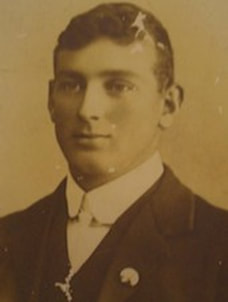
39659 Private
Robert Hayes
1st Bn. Auckland Regiment, N. Z. E. F.
29th July 1917
Plot III. A. 20.
Robert Hayes served in the New Zealand Expeditionary Force while his brothers David Scoggins and William Alford were in the A. I. F. They re-united as brothers in France prior to Robert’s death in 1917 at the battle of the Somme. Along with their sister, – Eliza Ann Scoggins (my grandmother), they were abandoned by their father following the death of their mother in 1887. The two youngest boys were adopted and took the family name of their adopted parents. In Robert’s case (Dr) Hayes from New Zealand and in William’s case, Alford from Melbourne.
Picture courtesy of Ronald Blanks
Robert Hayes
1st Bn. Auckland Regiment, N. Z. E. F.
29th July 1917
Plot III. A. 20.
Robert Hayes served in the New Zealand Expeditionary Force while his brothers David Scoggins and William Alford were in the A. I. F. They re-united as brothers in France prior to Robert’s death in 1917 at the battle of the Somme. Along with their sister, – Eliza Ann Scoggins (my grandmother), they were abandoned by their father following the death of their mother in 1887. The two youngest boys were adopted and took the family name of their adopted parents. In Robert’s case (Dr) Hayes from New Zealand and in William’s case, Alford from Melbourne.
Picture courtesy of Ronald Blanks
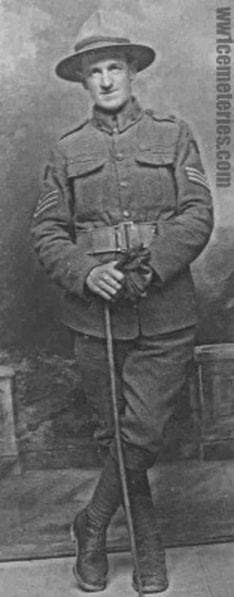
24/203 Lance Serjeant
Vivian Claude Kavanagh
2nd Bn. 3rd New Zealnad Rifle Brigade
9th August 1917
Plot III. A. 24.
Vivian Claude Kavanagh
2nd Bn. 3rd New Zealnad Rifle Brigade
9th August 1917
Plot III. A. 24.
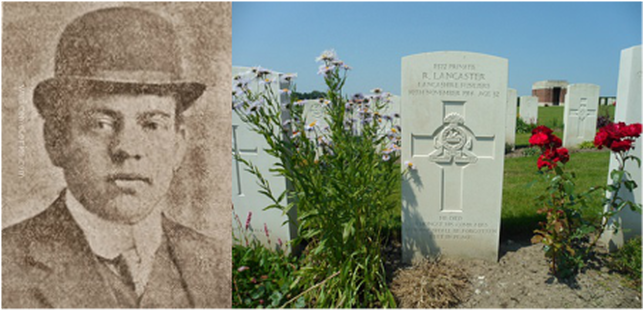
8372 Private
Richard Lancaster
2nd Bn. Lancashire Fusiliers
10th November 1914, aged 31.
Plot III. C. 1B.
Husband of Mrs Lancaster and father of 4 children of 11 Napier Street, Burnley, Lancashire.
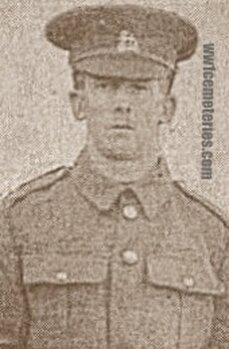
30008 Private
Jesse James Westall
2nd Bn. Royal Berkshire Regiment
17th October 1917
Plot III. C. 17.
Jesse James Westall
2nd Bn. Royal Berkshire Regiment
17th October 1917
Plot III. C. 17.
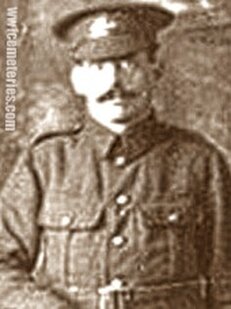
8850 Private
Harry Wilkinson
2nd Bn. Lancashire Fusiliers
10th November 1914, aged 29.
Plot I. A. 7.
Husband of Eva Wilkinson. Originally commemorated on the Ploegsteert Memorial.
Harry Wilkinson
2nd Bn. Lancashire Fusiliers
10th November 1914, aged 29.
Plot I. A. 7.
Husband of Eva Wilkinson. Originally commemorated on the Ploegsteert Memorial.
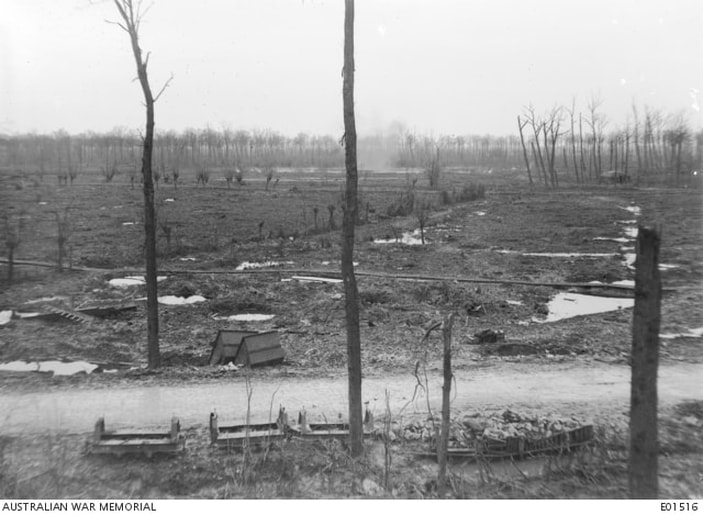
A view near Hyde Park Corner of Ploegsteert Wood, showing a German 5.9 inch shell burst, which effectively covered an area approximately 500 yards in diameter. Note the small white splashes where the fragments hit the water. The road shown leads to Messines, and the duckboard track continued to the reserve support and front lines, near Prowse Point and St. Yves. The house in the wood was the terminus of the light railway.
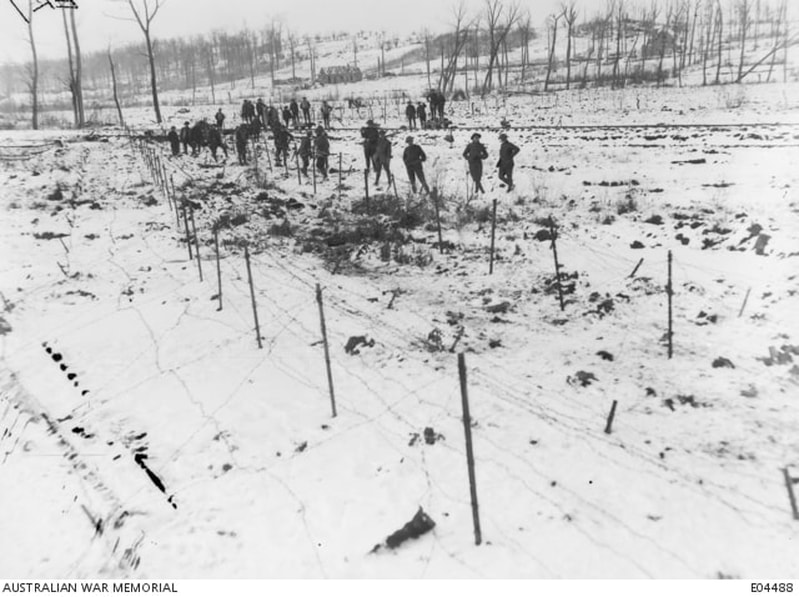
Ploegsteert Wood, Belgium. 26 December 1917. Men of the 22nd Battalion, laying down wire entanglements, behind the line at Ploegsteert Wood. Hill 63 is seen in the background. The men were living in hutments at Kortepyp Camp where Christmas Day was spent. The Battalion was in reserve and fatigue parties were sent forward daily by the light railway to Ploegsteert where wiring was carried out and extensive salvaging operations undertaken under the supervision of Major J. S. Dooley MC. The area was very quiet at this time and received only desultory shelling.
Images in this gallery © Werner Van Caneghem
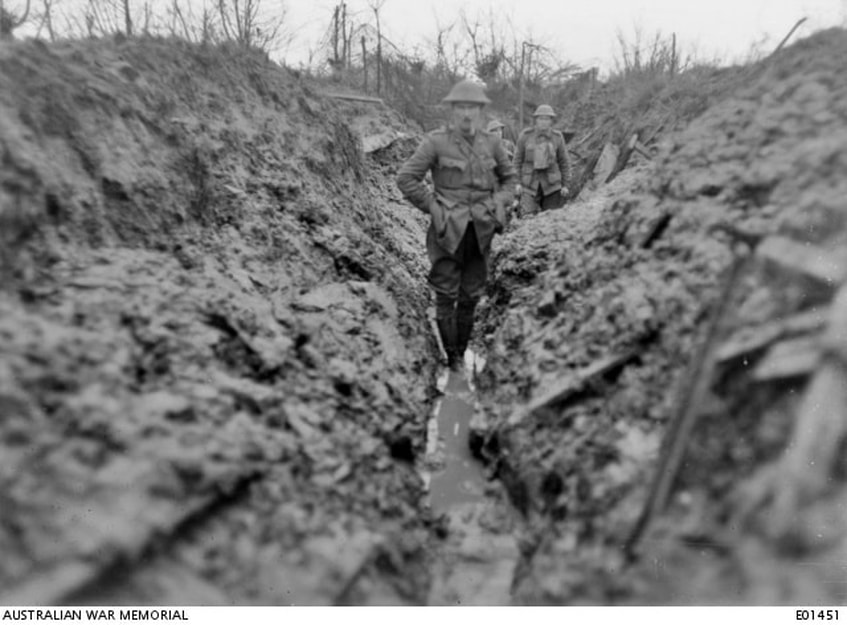
Unrevetted trenches in the Ploegsteert Sector, occupied by the 18th Battalion. The section photographed is a portion of Una Trench, 200 yards behind our front line posts. Identified, left to right: Captain W. G. Graham MC; Lieutenant H. Johnson; 32091 Sergeant W. H. Joyce, Assistant Official Photographer, AWRS.

